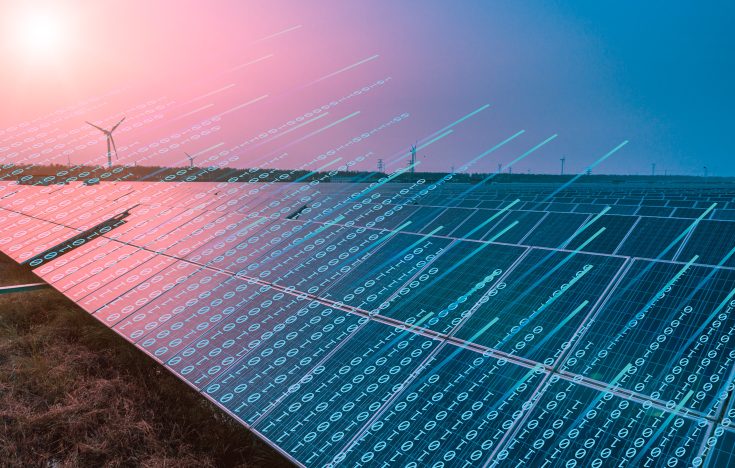Artificial intelligence is top of mind for corporations and investors alike. With a growing impact on our lives and ways of working, it offers a compelling opportunity to tackle complex areas, such as sustainability and the climate.
Both topics are dominating the agenda at international forums. At the 2024 World Economic Forum in Davos, themes of the event included “Artificial Intelligence as a Driving Force for the Economy and Society” and “Long-term Strategy for Climate, Nature and Energy”.
Harnessing the power of AI to tackle climate change
With 2023 the hottest year ever recorded, climate action is increasingly pressing. According to the WEF, AI-powered tools are crucial instruments for analysing vast datasets to identify climate risks and investment opportunities. They can be used to evaluate climate and financial data and measure carbon footprints. In biodiversity, AI can also provide ocean data analytics or biodiversity metrics.
Octopus Energy, one of the UK’s largest energy companies, is leading the charge on climate change by leveraging the power of AI. Speaking at the BNP Paribas Sustainable Future Forum, Gareth Jones, Chief Operating Officer, Centre for Net Zero, a not for profit research institute founded by the Octopus Energy Group, said: “AI is already disrupting all industries across the board. In the energy sector it can particularly help in three ways: understanding and forecasting supply from renewables and demand from consumers; optimising how energy is moved around the system – and setting up the right infrastructure to support this; and accelerating scientific and technical advances. For example, the next generation of EV battery is likely to be supported by AI.”
Centre for Net Zero has been using AI to model and forecast consumer demand. By understanding behaviour and generating synthetic data, it can accelerate research into the decarbonisation of global energy systems. The research institute has developed Faraday, a generative AI model that uses synthetic data.

❝ We’ve been using AI technology in a wide range of different areas. Drawing on machine learning techniques, we have developed Faraday, which models household energy use to capture the variability of how each household uses energy differently and gives us forecasts for consumer behaviour and demand. ❞
Gareth Jones explained: “We’ve been using AI technology in a wide range of different areas. Drawing on machine learning techniques, we have developed Faraday, which models household energy use to capture the variability of how each household uses energy and provides forecasts for consumer behaviour and demand. This will help us and other bodies develop the energy systems of the future.”
Octopus Energy recently issued a Syndicated Guarantee Facility. BNP Paribas acted as Sole Lead Arranger, Structuring Bank and Agent, supporting the transition to a sustainable and low-carbon economy. Banks have a clear role to play in this movement by redirecting financing from the most carbon-intensive energy producers to those creating green energy.
Data at the centre
With incomplete or inconsistent data a crucial barrier to greater adoption of ESG investment practices, ensuring comprehensive data will be a key challenge.
Speaking at the BNP Paribas Sustainable Future Forum, Marie d’Argentré, Head of CIB ESG Data & Transformation, BNP Paribas, noted: “In a recent survey we conducted across 400 institutions, we saw that 70% of them identified incomplete or inconsistent data as a significant barrier to greater adoption of ESG in their investment practices.”

❝ With increasing regulatory requirements, getting accurate, comprehensive and consistent data is really a challenge and on this front AI can be an instrumental lever for us. ❞
At BNP Paribas CIB, ESG Data & Transformation teams are drawing on AI to support corporate and investors clients to collect certain data that is particularly challenging, such as scope 3: “We have been testing tools like NLP and LLM to collect data from CSR reports, fill gaps in missing data. We also develop a GHG estimation model to estimate scope 1 and 2 for companies that do not report this data. We can then use this to help clients estimate their scope 3 emissions, which are notoriously challenging to calculate.”
Collaboration is key
The Bank also collaborates with the broader ecosystem. In cooperation with OS Climate, BNP Paribas has developed its own physical risk model to assess physical risk for its portfolio. This company has developed several tools for data, portfolio alignment, physical and resilient risk, and transition analysis. BNP Paribas has partnered with OS Climate since 2021.
Another example is Kayrros, an AI-powered environmental intelligence company that uses ESA and NASA satellite data to track methane emissions and other climate indicators. Supplying data to global bodies such as the United Nations’ IMEO, Kayrros enables authorities to alert operators and take action to bring down greenhouse gas emissions. Methane has a climate warming potential 84 times that of CO2 over a 20-year period. In 2022, Opera Tech Ventures joined an investment round that came to more than €40 million in support of the scale-up.
A gamechanger for the future
As disclosure requirements develop in Europe with the Corporate Sustainability Reporting Directive (CSRD), vast amounts of information will become available. Marie d’Argentré explained: “As a great deal of disclosure becomes publicly available from our corporate clients, AI will be critical in using this data to support corporations, and here at BNP Paribas, we are well placed to accompany them to derive full value from their data to manage their footprint and physical risks.”
With the widespread use of large language models and their arrival in the public domain, AI can drive change and accelerate the climate agenda for consumers and banks alike.
